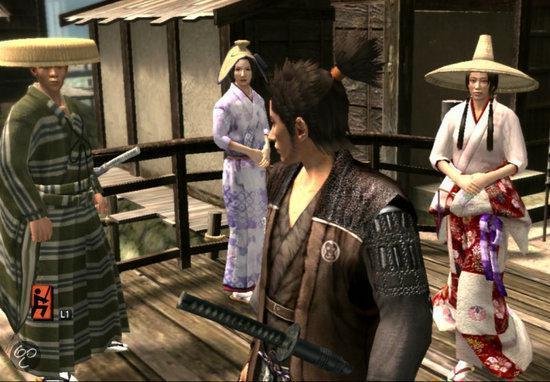
Your character's specific moves, along with the sometimes-voice acted cutscenes, too, are all welcome additions to an increasingly obsolete genre.Īnd at the end of the day, that means that while Samurai Riot Definitive Edition won’t be winning any prizes for evolving the gaming industry, it’s still fun.

The most noteworthy one of those is that there’s built-in support to speedrun the campaign, including leaderboards and a timer on the top of your screen at all times, which encourages replaying what is otherwise a pretty short experience. It’s also worth noting that while the game doesn’t do a whole lot to change up the 2.5D fighting genre, there are a few modern touches that bring the title into the 2020s. You can even play local co-op, with one person taking control of a neo-samurai dude and the other playing as a girl with an iron fist, which is a welcome touch in an era that all but forgot people do still actually have friends that come to their houses to play video games. Samurai Riot has some stupidly slick visuals, a great soundtrack and runs unsurprisingly well, and all these things make the experience feel a lot like playing a classic arcade game at a physical arcade. Nothing the game does is especially innovative, but that works to the title’s benefit.
Way of the samurai 1 game op Pc#
The controls are intuitive (assuming you’re playing with a controller on PC or…uh, a controller on Switch I guess), attack patterns are straightforward and the plot is interesting enough to keep an eye on it in between boss battles. The core combat in Samurai Riot is simple, but it’s also satisfying and weirdly engaging because it all just works.

And that’s good, because slapping the silliness (editor: you’re welcome for me making this review family-friendly) out of seditionists is a ton of fun. While there are combos to memorise and sub plots to pay attention to, the bulk of the game involves punching baddies and beating bosses. Samurai Riot isn’t an especially complicated game. Hey look, it’s the “creepy old guy ninja turtle” To do that, you need to combo attack your way through hordes of anamorphic animals and silly-looking samurai, make a handful of moral choices that decide the fate of the universe and…well, that’s kind of it.

The two-hour-long, and heavily replayable, adventure focuses on a team of two neo-samurai making their way through a Japanese-inspired landscape to save the world. And for better or worse, I was feeling the same way after playing Samurai Riot Definitive Edition, which isn’t exactly inspired by the 1980s, but at this point I just need to submit this article to meet my deadline and I don’t want to rewrite my introduction paragraph.Īll that is a roundabout way of saying that Samurai Riot (the definitive edition, although presumably everything I’m about to say also applied to the version of the game that launched in 2017) is a side-scrolling beat-em-up in the same vein as Streets of Rage or old arcade games. These games, and the others I’ve played but can’t hyperlink because it screws up the Google SEO algorithm, have made me appreciate a time before everyone was running around with smartphones and Spotify. Some of those titles are fantastic, others are forgettable, and a select few are so bad it’s almost funny.

In the two years that I’ve been writing for Jump Dash Roll, I’ve played an almost concerning amount of games that were heavily inspired by the decade Rambo released in. At this point, it almost feels cliche to say that I miss the 1980s.


 0 kommentar(er)
0 kommentar(er)
